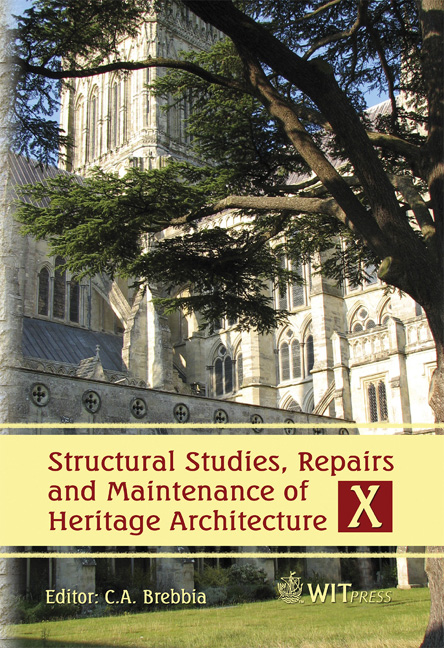Non-linear Finite Element Analysis And Limit Analysis Comparison Of The Caaveiro Stone Arch Bridge
Price
Free (open access)
Transaction
Volume
95
Pages
12
Published
2007
Size
1,141 kb
Paper DOI
10.2495/STR070521
Copyright
WIT Press
Author(s)
J. D´ıaz, L. Romera & S. Hern´andez
Abstract
At the present time, there is no accepted procedure to determine the ultimate load that a masonry arch bridge can support. Unlike in the analysis of other structural typologies, it is not common to apply the finite element method to the structural analysis of this construction type. This is because it is rather complicated and expensive to know exactly many of the variables that characterize the structural behaviour of a model, such as material properties, load history, constructive sequence or its own geometric definition. On the other hand, the special configuration of masonry arches, with evident discontinuities in the joints between voussoirs, requires a unique and specific approach to the problem. It is not realistic to consider a totally homogenous structure, as occurs in other typologies and materials. In order to overcome these disadvantages, the purpose of this job is to develop a finite element model, which allows us to know with reasonable reliability, the maximum load that the bridge can support considering all the characteristics of the masonry structures, while keeping the computational cost under acceptable limits. The structure to be modelled is a stone arch bridge located next to the Caaveiro monastery in the northwest of Spain. The finite elementmodel is a two-dimensional plane-stress model considering both geometric, material and contact nonlinearity. The results from this model are compared with those obtained from the limit analysis, considering the hypothesis of the plastic collapse of the structure. Keywords: finite element, nonlinear analysis, limit analysis, arch bridge.
Keywords
finite element, nonlinear analysis, limit analysis, arch bridge.




